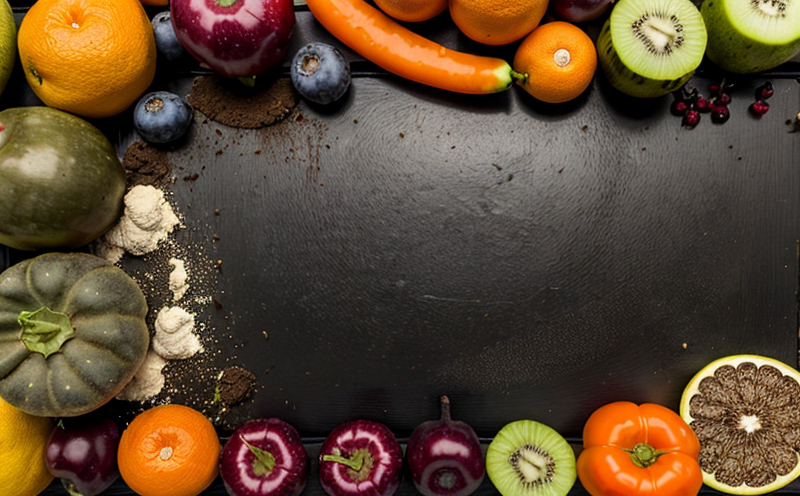ISO 21415 Nitrate and Nitrite Quantification in Leafy Vegetables
The ISO 21415 standard provides a method for determining the levels of nitrate (NO3-) and nitrite (NO2-) in leafy vegetables. This critical analysis is essential for ensuring food safety, particularly when dealing with products that may be consumed raw or undergo minimal processing. Nitrate and nitrite are natural components of many plants but can also result from agricultural practices such as the use of nitrogen-based fertilizers.
The significance of this test extends beyond mere compliance; it plays a vital role in safeguarding public health by preventing the intake of harmful levels of these substances, which may lead to conditions like methaemoglobinaemia. This condition can occur when nitrate converts into nitrite in the body, causing a reduction in oxygen-carrying capacity.
The procedure outlined in ISO 21415 involves several key steps, each designed to ensure accuracy and reliability of results. Initially, leafy vegetables are carefully selected based on their potential exposure to environmental pollutants or contaminants. The samples undergo rigorous preparation, including washing and slicing, followed by the extraction process where nitrate and nitrite are separated from other components using appropriate solvents.
The separation step is crucial as it ensures that only the target analytes are present in the final solution for quantification. After extraction, the sample is typically processed through a series of purification steps to remove any interfering substances. The purified sample then undergoes analysis using advanced instrumentation such as ion chromatography or colorimetric methods.
Ion chromatography offers high precision and sensitivity, making it suitable for detecting even trace amounts of nitrate and nitrite in leafy vegetables. This method involves the injection of a sample onto an analytical column packed with charged resin beads that selectively retain ions based on their charge. The retained ions are then eluted using a mobile phase, and detection occurs as they pass through a conductivity detector.
Alternatively, colorimetric methods involve the reaction of nitrate or nitrite with specific reagents to produce a colored complex. This change in color intensity is measured spectrophotometrically and correlated back to the original concentration of the analyte. Both methods provide accurate quantification but require careful calibration and quality control measures.
The results obtained from these analyses are critical for food safety and quality assurance programs. Compliance with this standard ensures that consumers receive safe and high-quality leafy vegetables, free from excessive nitrate or nitrite levels. This is particularly important in the context of global food trade where regulatory standards vary across countries.
ISO 21415 not only helps in detecting harmful compounds but also supports research into optimizing agricultural practices to reduce nitrate and nitrite accumulation. By quantifying these substances, laboratories can assist growers and processors in identifying potential issues early on, thereby promoting sustainable farming methods.
In conclusion, the application of ISO 21415 ensures that leafy vegetables meet strict regulatory requirements and contribute to maintaining public health standards. The precision and reliability provided by this standard are indispensable for ensuring the safety and quality of food products in both domestic markets and international trade scenarios.
Applied Standards
The ISO 21415 standard is closely aligned with other international standards that address food safety and agricultural practices. For instance, it complements ISO 3696, which deals with the analysis of nitrate in water supplies, by providing a method specific to leafy vegetables.
Additionally, ISO 8402 provides guidelines on quality assurance systems for analytical laboratories, ensuring that the procedures followed during quantification adhere to best practices. Compliance with these standards enhances the credibility and reliability of test results obtained from ISO 21415 analyses.
Scope and Methodology
The scope of ISO 21415 is limited to leafy vegetables, such as lettuce, spinach, kale, and collard greens. The method focuses on quantifying nitrate (NO3-) and nitrite (NO2-) in these specific types of produce.
The methodology involves several critical steps:
- Careful selection and preparation of leafy vegetable samples.
- Extraction of nitrate and nitrite using appropriate solvents.
- Purification of the extracted sample to remove interfering substances.
- Analytical determination via ion chromatography or colorimetric methods.
The results are reported in parts per million (ppm) for both nitrate and nitrite, providing a clear indication of their presence and concentration within the sample. This quantitative data is essential for compliance with regulatory limits set by various jurisdictions.
Use Cases and Application Examples
- Regulatory Compliance: Laboratories ensure that processed leafy vegetables meet national and international standards regarding nitrate and nitrite content.
- R&D Support: Researchers use ISO 21415 to explore the effects of different fertilization techniques on nitrate accumulation in leafy greens.
- Quality Assurance: Processing plants utilize this method to maintain consistent quality across their product lines, ensuring that each batch meets safety and nutritional standards.
- Agricultural Audits: Growers use the results from ISO 21415 analyses as part of their internal audit processes to identify areas for improvement in farming practices.
- Certification Programs: Certification bodies rely on these tests to verify that leafy vegetables comply with stringent quality and safety criteria before granting certification to producers.
- Consumer Safety: Retailers employ ISO 21415 to protect consumers by ensuring that the products they offer are safe for consumption.





